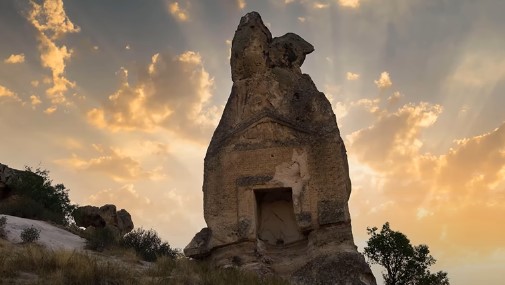Jakarta, Indonesia Sentinel — Archaeologists have successfully deciphered a long-debated inscription on the Arslan Kaya, or “Lion Stone,” an ancient Turkish monument in western Turkey dating back 2,600 years. The inscription written in the monument had puzzled researchers over a century, since its discovery in 1884.
The inscription on the iconic monument which features a sphinx statue flanked by depictions of a goddess and lions was an object of research for century. Mark Munn, a professor of ancient Greek history and archaeology at Pennsylvania State University recently wrote a paper about the inscription, which was published Oct. 24 in the journal Kadmos.
The inscription which written in Old Phrygian language, was nearly erased by time and heavily damaged from weathering and looters. What is written in the monument has been a source of debate since the 19th Century.
For over a century, researchers could identify only four discernible letters, leaving most of the text indecipherable. However, advancements in analysis have now unlocked its secrets.
Deciphered After Over 100 Years
According to LiveScience, the inscription reveals the name “Materan,” a goddess revered by the Greeks as the mother of the gods.
To decipher the text, researchers relied on morning sunlight, as the shadows at this time highlight the remaining traces and help decipher the letters of the inscription. They then comparing the inscription hypotheses with the photographs of the monument from 19th-century.
Researchers then managed to confirm the text spelled out “Materan,” along with other Old Phrygian characters that acted as word separators.
In Phrygian mythology, Materan refers to the mother goddess worshipped as the protector of the central deity. “The Greeks knew her as the Mother of the Gods,” Munn said, adding that the Romans called her “Magna Mater,” or “Great Mother.”
The Self-Reward Culture Among Gen Z Becomes Excuse for Consumptive Behavior
Experts estimate the inscription dates to the first half or mid-6th century BCE, based on stylistic details of the monument.
Munn explained that it makes sense for the monument to bear the name Materan, as the Arslan Kaya monument also features an image of a goddess. The name Materan was likely part of a larger inscription detailing who commissioned the monument and the significance of the goddess.
Cultural Connections
The discovery suggests that the Arslan Kaya monument was likely created at the height of the Lydian Empire, when it dominated the region alongside the eastern Turkish Phrygian Empire. Renowned for inventing gold and silver coin and their worship of the mother goddess, the Lydians shared cultural ties with the neighboring Phrygians.
This connection, researchers say, underscores the shared veneration of the mother goddess as a central figure in both kingdoms’ spiritual practices.
While the debate over the inscription has been going on for over a century, the breakthrough not only enriches understanding of Phrygian culture but also sheds light on the enduring influence of ancient goddess and civilizations.
(Raidi/Agung)

























